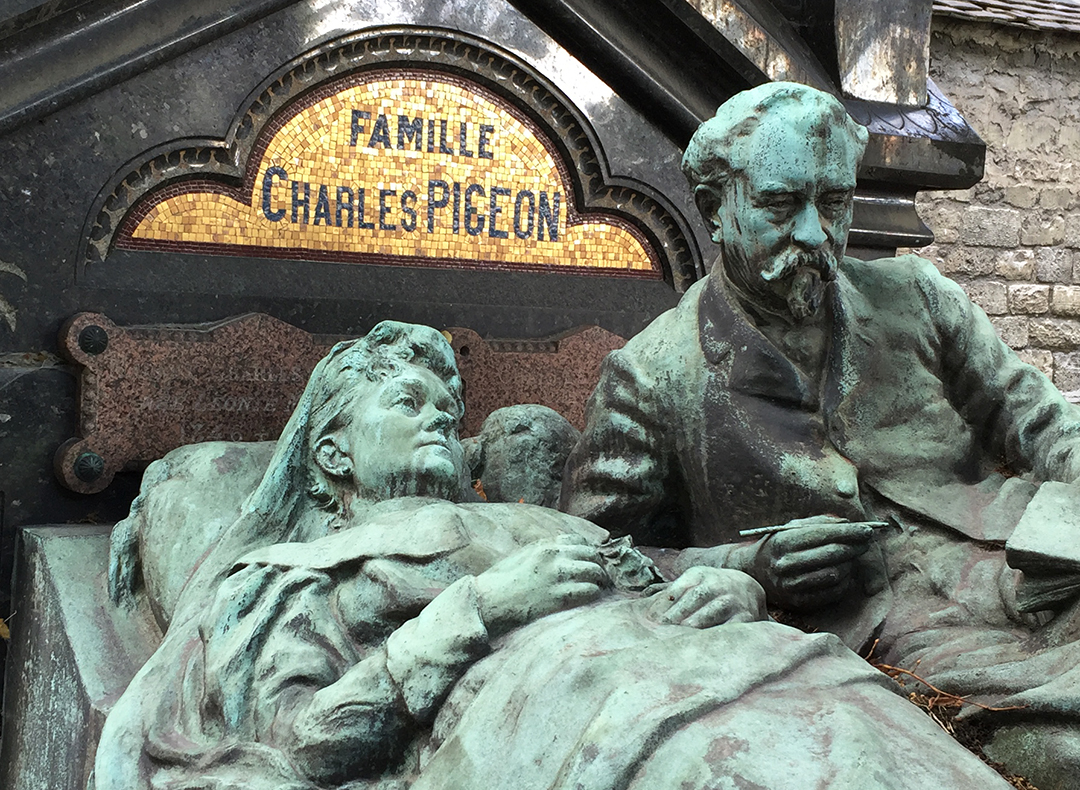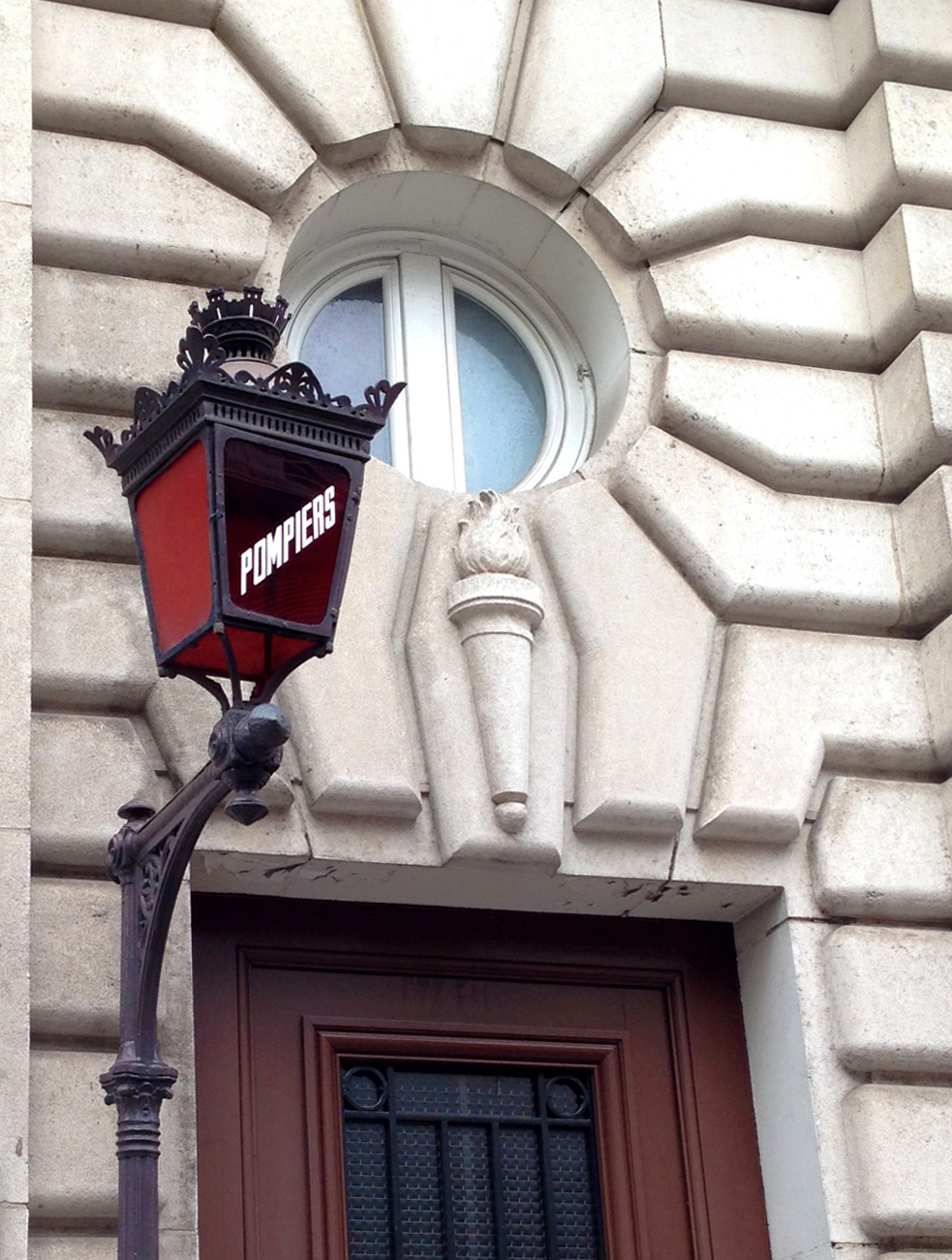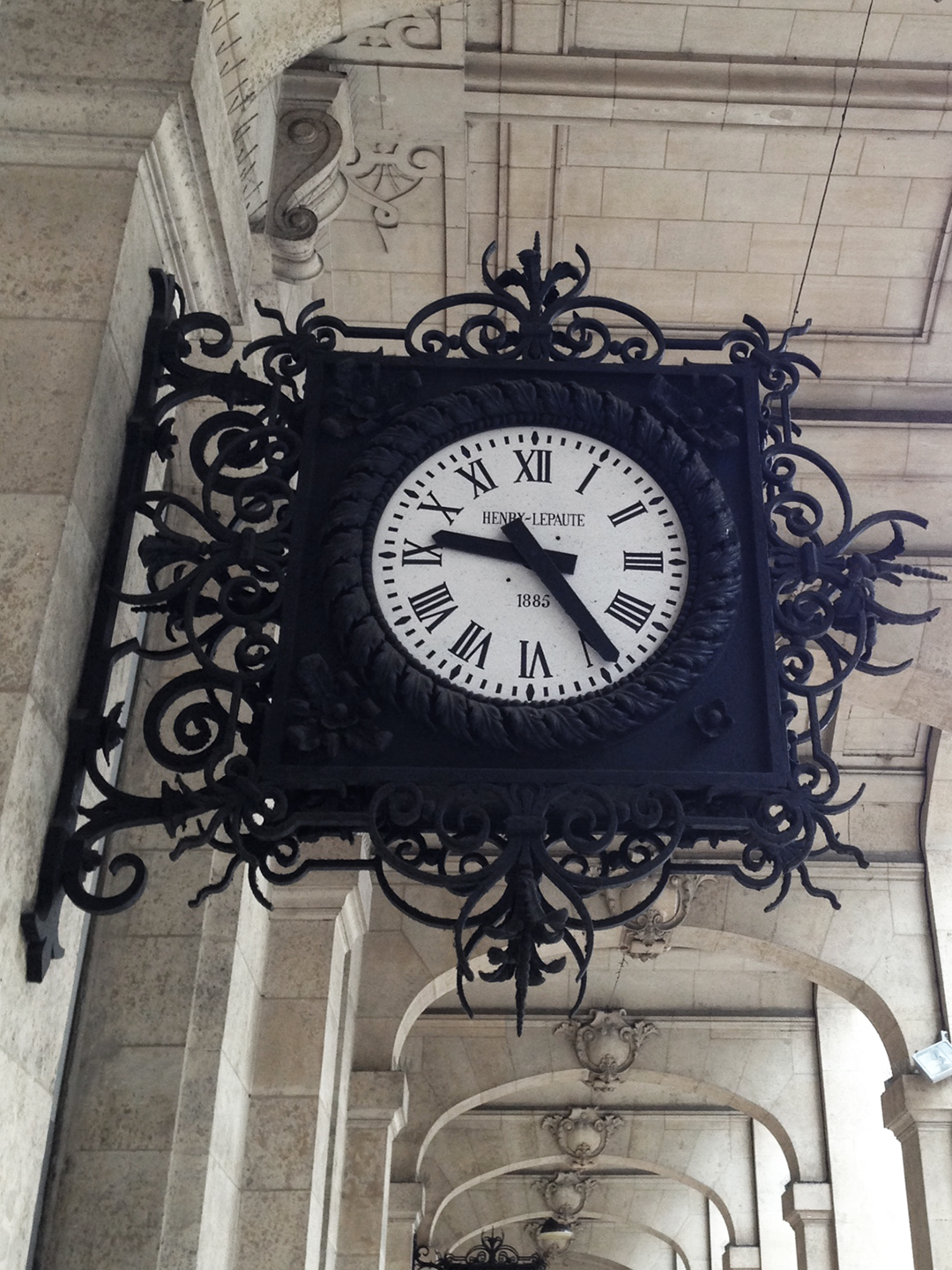Paris is filled with architectural wonders: Notre-Dame, the Eiffel Tower, the Grand Palais, Pei’s Pyramid… Whether medieval, contemporary or anywhere in between, the city offers enough structures to fill your time for weeks. After hitting the must-see monuments and museums, those of us who are lucky enough to visit Paris frequently become flâneurs: we just wander around, looking up and looking down, taking in the little details that regular guidebooks do not cover. We start noticing the different designs of heurtoirs and chasse-roues, niches in stone walls that used to contain oil lamps, public horloges and cadrants solaires, old wells with their iron pulleys, street signage that preceded the familiar cobalt enamel plaques, bullet marks that remind us of turbulent times, the occasional boîte à sable, perhaps even the boule aux rats at the church of Saint-Germain-l’Auxerrois.
Sundials. There are 120 of them scattered around Paris, including this monumental one on rue Perrée, 3rd arr.
Four years ago, I picked up a copy of Curiosités de Paris from éditions Parigramme. They specialize in Paris-centric titles and I own almost all of them. It quickly became my inseparable travel companion. I refer to it for explanations about odd architectural discoveries I make during my walks. Sometimes, I comb the book ahead of my trip to identify unusual sights and objects I will encounter in the areas I plan to visit. The book is organized by categories but also features an index by arrondissement that cross-references hundreds of small treasures. Here are a few samples gleaned from my various scavenger hunts.
Corner guards. Ubiquitous at the entrance of old doors, they can be made of stone or cast iron. So many different designs, all made to protect the corners of a building from the wheels and axles of carriages. Rue Notre-Dame de Nazareth, 3rd arr. To the left, a leveling marker.
Street corner religious statues. Former oratory niches with statuettes of Mary, Madonna and Child, or various saints. Maison Bleue, across Notre-Dame-des-Victoires used to sell religious objects. 2nd arr.
Guild signage. To identify trades and occupations. A cast iron Graphic Arts panel replaces a window on rue Crussol, 11th arr.
Measuring instruments. Thermometers and barometers are less common than clocks but this one in passage Bourg l’Abbé is particularly stunning. 2nd arr.
Tombs. Strolling the cemeteries yields fascinating discoveries such as the Pigeon family grave in Montparnasse. He patented a portable gasoline lamp. 14th arr.
Vestiges of gas lighting. Before la fée électricité, street lighting used gas and fire stations had their own distinctive lanterns. Rue du Château-d’Eau, 10th arr.
Ceramics and mosaics. On floors, ceilings, storefronts, building entrances… sometimes, the whole street is a visual feast. One of eight arcades of mosaics featuring wild animals at passage Rauch, 11th arr.
Architectural oddities. A drive-through château? Why not? Château des Ternes in the 17th arr.
Clocks. Old public clocks abound but this one at the 24-hour Central Post Office on rue du Louvre sticks out on a bracket to improve visibility: essential to make sure your tax return is stamped before midnight. 1st arr.
I was thrilled when this book was translated into English last year. The publisher sent me an advanced copy and I promptly added it to our catalog selection. It is a fantastic compendium of exciting, unusual finds.
My French and American copies
But I’m still curious about something. Did you ever notice that the spines of French and American books read in opposite directions? Anybody knows why? Please, post your theories in the comments section.
Vocabulary
Le flâneur: someone who strolls aimlessly
Le heurtoir: door knocker
Le chasse-roues: corner guard
L’horloge (f): clock
Le cadrant solaire: sundial
La boîte à sable: sandbox (used in case of icy streets)
La boule aux rats: ball of rats
La fée électricité: electricity fairy












